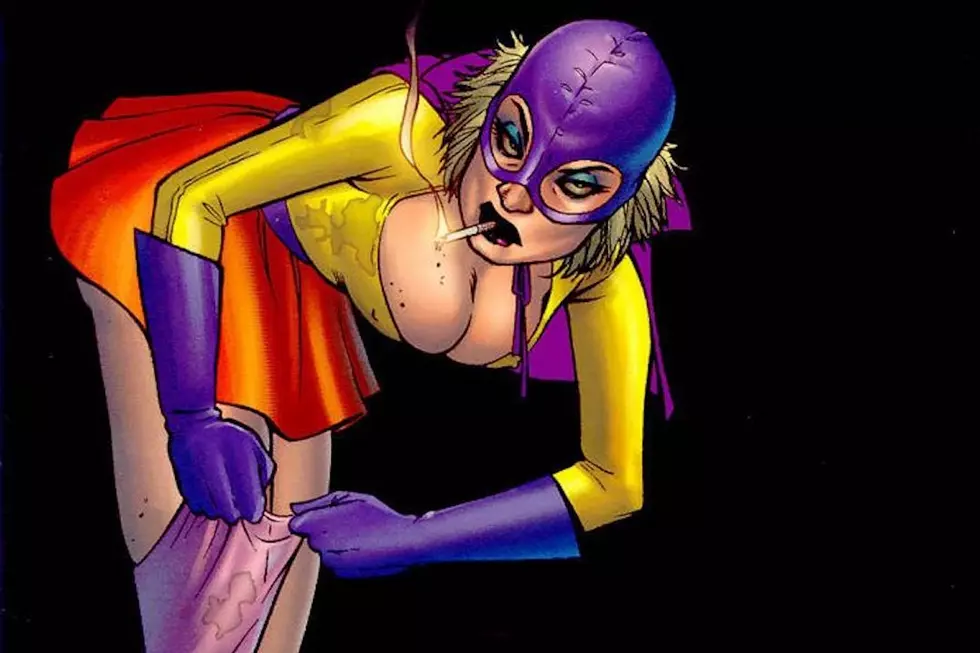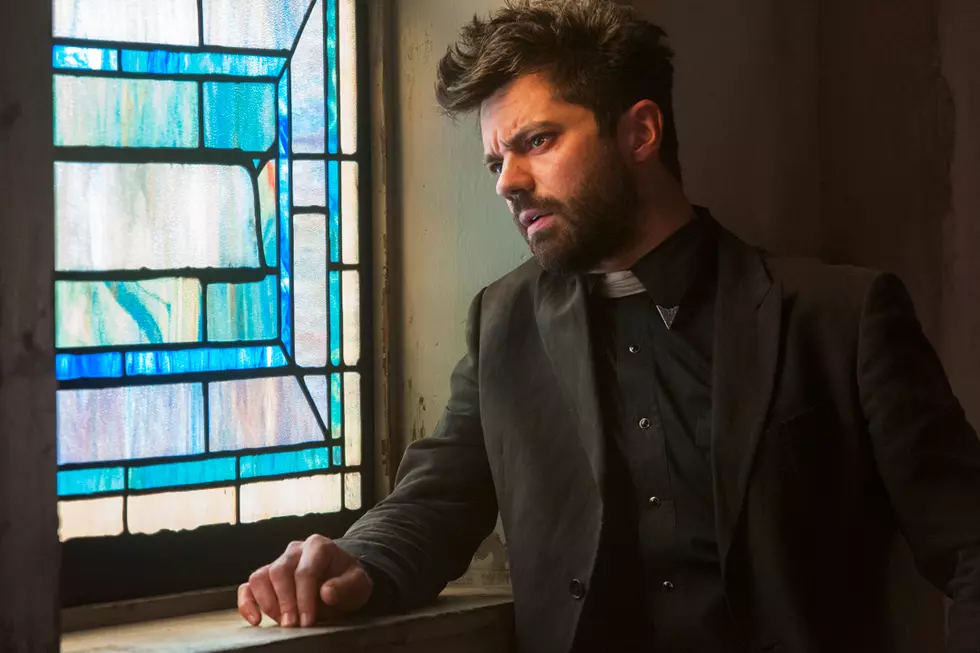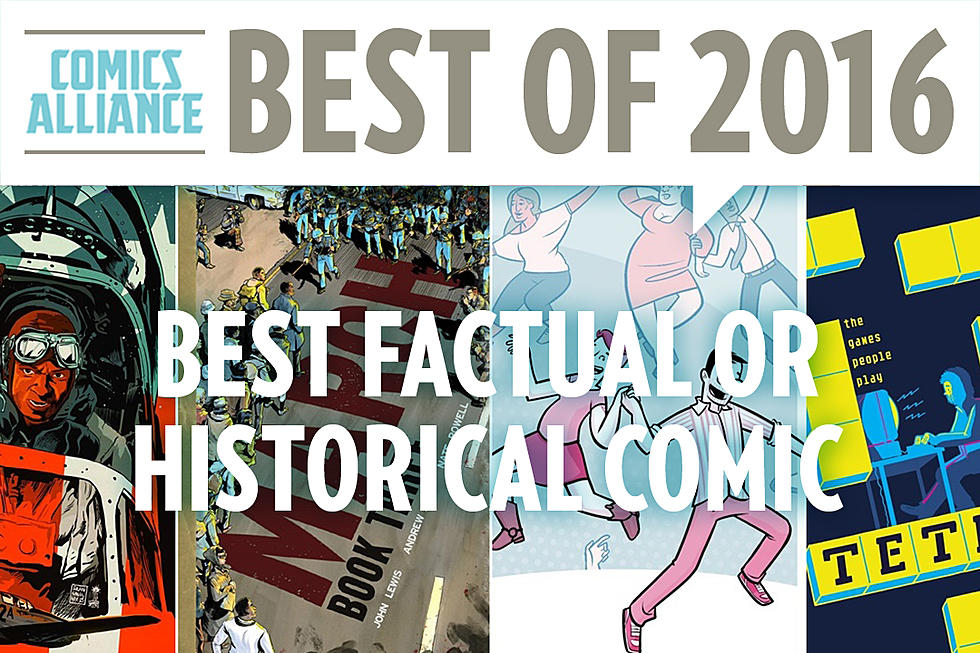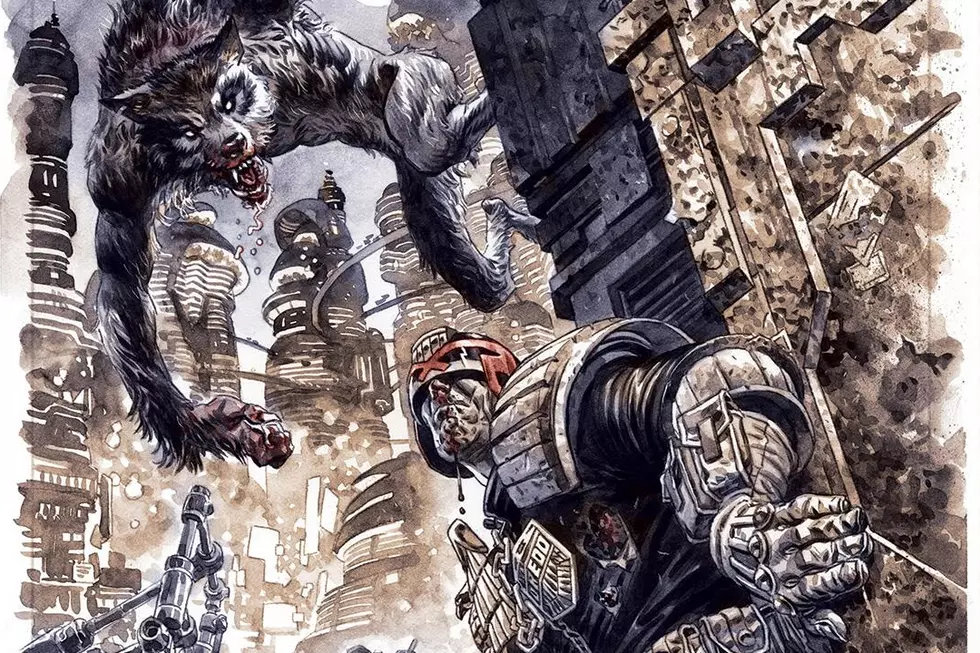
Preacher Ma’am: How Does ‘Gone to Texas’ Hold Up Today?
As someone who thought she was a dude in the late 1990s, Preacher was the comic I looked forward to every month more than any other. As someone who knows she isn’t a dude in the mid-2010s, I’m looking back on this series and examining what still works, what doesn’t work, and what its lasting legacy is.
Created by Garth Ennis and Steve Dillon, with colors by Matt Hollingsworth, letters by Clem Robbins, and covers by Glenn Fabry, Preacher launched in 1995 from Vertigo. The first trade paperback, Gone To Texas, was published in 1996. The series is now being adapted for the screen as a TV series on AMC, and it was the moment that Jesse Custer pulled out a cellphone in the Preacher pilot that I realized that the mid-'90s were a long time ago.
In most other media, something being of its time wouldn’t be a problem, but this is comics --- and specifically, American comics, long dominated by superheroes. The superheroes continually update themselves --- even Superman has a cell phone now --- and their prevalence means that it’s half-expected that everything else in the format will follow suit, its rough edges sanded down by time and the occasional reboot.
This trend, and many other trends in American comics, was what Vertigo set out to run counter to, so Preacher being of its time isn’t a surprise. It started; it ended; it is what it is, rough edges and smooth. If you gave the comics' Jesse Custer a phone with Angry Birds on it, he’d probably make you eat it.
“Gone to Texas,” as the first story, is very of its time, down to the character Hugo Root being obsessed with the kind of government conspiracies you got in the era of The X-Files. It also has a lot of table-setting to do, and while most of it clicks right away, not all of it does. The framing sequence of the first issue, that of the group getting their stories straight in a diner, is mostly abandoned before long. A lot of time is spent up in Heaven, in a jarring tonal shift that the series shied away from in later stories. There’s a lot of exposition, at one point brought on by Jesse literally bumping his head, like he’s in an episode of I Love Lucy, albeit one where Lucille Ball blew peoples’ heads off with a Desert Eagle.
What does work from page one are the interpersonal relationships, which were always the heart of the book. Jesse and Tulip’s relationship has far more animosity than the star-crossed lovers they became in the next book, but Jesse’s machismo as the chief barrier between them is there from the word go.
Also there from the beginning --- and set up dozens of issues in advance of where it would take its darkest turn --- is Jesse’s friendship with Cassidy, where Jesse is won over mostly by what Cassidy tries to be, to the point that he ignores what Cassidy actually is.
Also at play is the storytelling of Steve Dillon, who was, and still is, probably the most perfect collaborator Garth Ennis has ever had. A lot of people characterize Dillon’s work as stiff, but I think this is a misreading of his work; a better term is stillness. Each panel could be a painting, but they all work in sequence. He eschews speed lines and conveys motion and action with well-choreographed panels and the arcs of objects and bodies in motion, such as in this sequence where we find out that Cassidy is a vampire:
This stillness also works for any sequence where characters are having a conversation, ranging from shooting the breeze to a serious confrontation, with Dillon shifting the viewing angle as needed to keep the reader’s interest, though never gratuitously --- every panel centers who it needs to center:
Being able to convey grotesque action and heavy dialogue means a lot when collaborating with Garth Ennis, it turns out?
Between the fantastic Glenn Fabry covers and the reunion of Garth Ennis and Steve Dillon, Preacher feels like a sequel to Hellblazer at first --- or maybe the all-American spinoff of same. It’s more restrained than the all-myths-are-true approach of The Adventures of John Constantine Across Post-Thatcher Britain, but there’s still a vampire who shows up just ‘cause. The nihilism of Hellblazer is swapped out for a general misanthropy --- less the belief that things can never be good, and more the belief that the world can, and must, be made better than it is.
While Hellblazer is far enough away in time and place that it feels easier to look at in the context of its time, it’s harder to do this with Preacher, even though Preacher is so 1990s that a serial killer shows up in the second arc.
There’s a lot of “ha ha, you’re gay” as an insult, and I get the feeling it’s less “Jesse is a bit too macho for his own good” and more “the prevailing attitudes on gay rights in 1996 were pretty terrible, actually.” There’s a lot of shock humor that would have been cutting edge back before every man, woman, and enby on Earth had been exposed to goatse.cx (do not search for that), and while the shock humor is well done, it's still a little past its sell-by.
But again, Preacher is hardly the only work to be rooted in its time. There are a lot of retrograde gender roles in, say, The Prisoner, which still has a lot to say about the nature of individualism and the security state. Whether Preacher is more The Prisoner or the 1960s James Bond movies --- which have a lot less to say, and are a lot more retrograde, but are still pretty fun to watch --- is up in the air this early in the series.
As multi-year epic blasphemous cowboy stories about Americana go, if nothing else, Preacher is well-told. But the series takes a staggering leap from good to great as early as its second trade paperback, and I'll be back to talk about that in two weeks’ time.
See you then.
More From ComicsAlliance



![NECA Pits Aliens Against Batman, Turtles Against Terminators And More [Toy Fair 2017]](http://townsquare.media/site/622/files/2017/02/IMG_2656.jpg?w=980&q=75)





